
Recycling copper reduces waste and conserves resources effectively.
Copper recycling helps conserve natural resources. By recycling copper, the need for new copper mining and extraction is reduced. This helps preserve valuable reserves of copper ore and minimizes the environmental impact associated with mining activities. The recycling process for copper requires significantly less energy compared to the production of copper from primary sources. Recycling copper can save up to 85-90% of the energy that would be required for primary production. This energy savings helps reduce greenhouse gas emissions and lowers the carbon footprint associated with copper production.
Recycling copper helps divert copper-containing waste from landfills. Copper is a valuable material, and recycling it prevents it from being discarded as waste. This reduces the volume of waste generated and helps minimize environmental pollution. Copper recycling contributes to economic growth and job creation. The recycling industry provides employment opportunities in the collection, sorting, processing, and manufacturing of recycled copper. Additionally, recycling copper reduces the dependence on imported copper, which can have economic benefits for countries.
- Copper wiring, cables, and other components from electronic devices and appliances can be recycled.
- Copper pipes, fittings, and roofing materials can be recycled.
- Copper scraps and residues generated during manufacturing processes can be recycled.
- Copper radiators, wiring harnesses, and other copper-containing parts from vehicles can be recycled.
- Discarded copper coins, jewelry, and decorative items can be recycled.
- Copper can be recycled from general scrap metal sources, such as machinery, equipment, and other metal products.
Recycled copper undergoes processes such as sorting, shredding, melting, and purification to remove impurities and contaminants. The resulting copper can be used to produce new copper-based products or alloys, continuing the cycle of reuse. About 40% of the annual consumption of alloys of this metal is supplied from recycled copper materials.
- Tensile strength
The tensile point of copper metal alloys is not clearly defined. It is more common than at 0.5% tensile strength, the yield strength of annealed materials is considered as one-third of their tensile strength. Cold working hardening means that the materials become harder and their ductility decreases and the yield strength approaches the tensile strength. - Cold and hot work
Both copper and its alloys can be cooled and heated. Ductility can be recovered by annealing or accidental annealing during welding or soldering. - Electrical conductivity
The electrical conductivity of this product is in the second place after silver and it is 97%. Due to its lower cost and higher frequency, it is traditionally used as a standard material for electricity transmission applications. Although from a weighted point of view, a large proportion of high voltage power lines now use more aluminum than copper, the conductivity of aluminum is about twice that of copper. - These aluminum alloys have low strength and need to be improved by galvanizing or coating aluminum with high tensile strength steel wires in each layer. Although the addition of other elements improves properties such as strength, it does cause some reduction in electrical conductivity. For example, adding 1% cadmium can increase strength by 50%, but electrical conductivity can be reduced by 15%.
- Thermal conductivity
The thermal conductivity of this metal is about twice that of aluminum and 30 times that of stainless steel. Copper is therefore used for applications that require rapid heat transfer, such as kitchen utensils, heat exchangers, car and vehicle radiators, and computer heat storage units, rotating disks, and television sets. - Corrosion resistance:
All alloys of this metal have corrosion resistance against water and steam. In most industrial and marine atmospheres, the alloys of this product have corrosion resistance. The metal is resistant to saline solutions, soils, non-oxide minerals, organic acids, and caustic solutions.
Wet ammonia solution, halogens, sulfides, solutions containing ammonia ions, and oxide acids, such as nitric acid, will attack copper. The corrosion resistance of copper alloys is due to the formation of adhesive films on the surface of the material. These films are relatively impermeable to corrosion, thus protecting the base metal from further attack. Cu-Ni alloys, aluminum brass, and aluminum show excellent corrosion resistance in saltwater.
-
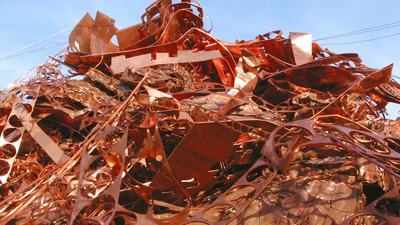
Copper recycling significantly conserves natural resources by reducing the need for new mining and extraction, thus preserving valuable copper ore reserves. The process requires 85-90% less energy than primary production, leading to lower greenhouse gas emissions and a reduced carbon footprint. Recycling also diverts copper waste from landfills, minimizing environmental pollution. The industry creates jobs in collection, sorting, processing, and manufacturing recycled copper, contributing to economic growth. Various sources of recyclable copper include wiring from electronics, pipes, fittings, and even discarded coins. The recycling process involves sorting, shredding, melting, and purifying to produce new copper products or alloys. Approximately 40% of annual copper alloy consumption comes from recycled materials. Copper"s properties such as high electrical and thermal conductivity make it essential in various applications including electrical transmission and heat exchangers.
Its corrosion resistance further enhances its utility across industrial sectors. "
-

Copper ingots are primarily produced through smelting and casting, where copper ore is extracted, processed, and refined. The smelting process involves heating concentrated copper ore with fluxes in a furnace to separate impurities, resulting in molten copper. This molten metal is then poured into molds to solidify into ingots. An alternative method for producing copper ingots is electrolytic refining, which uses an acidic copper sulfate solution to deposit copper ions onto a cathode through electrolysis. Copper ingots come in various grades, with purity levels ranging from 99. 95% to 99. 99%. These ingots serve as a fundamental form of copper for manufacturing products and alloys.
Additionally, recycling processes can convert scrap copper into new ingots by shredding and smelting used materials like wiring and pipes. Copper has historical significance dating back to ancient civilizations and remains vital in modern applications due to its excellent conductivity and malleability.
-

The Middle East and West Asia exhibit a robust demand for copper, driven by urbanization, construction, and industrial growth. Key countries like Saudi Arabia, Iran, Turkey, and the UAE are experiencing significant infrastructure development that necessitates large quantities of copper for electrical wiring and plumbing systems. Despite having some mining operations, the region remains a net importer of copper, relying on imports from major producers such as Chile and Peru. Dubai and Istanbul serve as crucial trading hubs for copper distribution. The rise in population and disposable incomes has further increased the demand for electrical devices, making copper essential in manufacturing components like transformers and motors. Additionally, the region is witnessing a growing emphasis on copper recycling to promote sustainability. Global copper prices significantly influence the local market dynamics, affecting profitability across various industries. While the high cost of copper compared to alternatives like aluminum can deter some users, its superior conductivity and safety make it a preferred choice in electrical applications. The ongoing industrial expansion across sectors such as construction and automotive continues to drive copper consumption in this region.
-
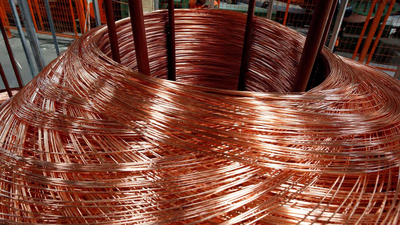
Copper toxicity can occur from excessive consumption or inhalation, leading to symptoms like nausea, abdominal pain, and severe organ damage. Acute cases are rare and often linked to occupational exposure or accidental ingestion. Wilson"s disease, a genetic disorder affecting copper metabolism, results in copper accumulation in organs, necessitating treatment to reduce intake and eliminate excess copper. Allergic reactions to copper may arise from skin contact, causing irritation or dermatitis. Copper"s antimicrobial properties have led to its use in medical settings to reduce infection risks. Recent advancements include a bioactive implant that combines collagen with copper particles, significantly reducing bacterial populations and enhancing bone growth. This innovative approach offers a potential one-step treatment for bone infections without antibiotics. While copper is essential for various bodily functions, excessive exposure can lead to health issues.
Its traditional medicinal uses are often unsupported by scientific evidence, although some claim benefits for arthritis relief. The metal"s ability to inhibit microbial growth has prompted its application in hospital environments to combat infections. "
-
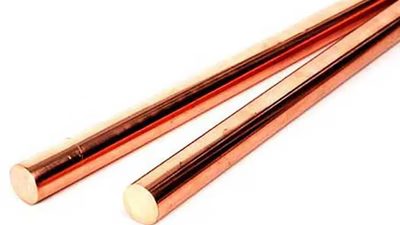
Copper is a vital transition metal, known for its high electrical and thermal conductivity. It has been utilized since ancient civilizations, marking the beginning of the Bronze Age. Found in various minerals, copper is primarily extracted from ores through mining processes. Its applications span across electrical wiring, plumbing, and architecture, making it the third most widely used industrial metal globally. The majority of copper consumption is attributed to electrical applications, with significant recycling potential that enhances its sustainability. Copper alloys like bronze and brass exhibit improved properties, further expanding its utility. Additionally, copper"s antimicrobial properties make it valuable in medical settings. However, the environmental impact of copper mining necessitates sustainable practices to mitigate habitat destruction and pollution. "
-
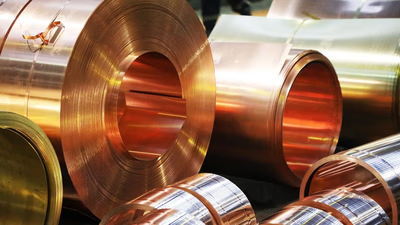
Copper and its alloys, including bronze, brass, and cupronickel, play a significant role in various industries due to their unique properties. Bronze, an alloy of copper and tin, is known for its strength and corrosion resistance, making it ideal for sculptures and mechanical components. Brass, primarily composed of copper and zinc, is valued for its malleability and attractive appearance, commonly used in musical instruments and plumbing fittings. Cupronickel combines copper with nickel to enhance corrosion resistance in marine applications. Other notable alloys include leaded brass for improved machining properties and special alloys like aluminum bronze that offer high strength and thermal conductivity. The classification of these alloys is based on their composition, with variations such as alpha brass (less than 37% zinc) and phosphor bronzes that include additional elements for enhanced performance. Understanding these types of copper alloys is crucial for businesses engaged in import-export activities within the Middle East trade platform.
-
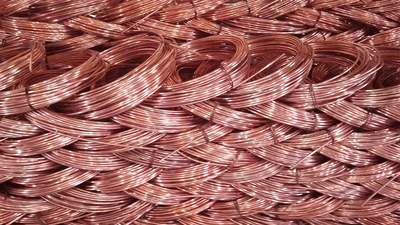
Copper is a vital metal extensively used across various industries, particularly in electricity and construction. Its excellent conductivity makes it the preferred choice for electrical wiring, power cables, and electronic devices. The electricity sector is the largest consumer of copper due to its efficiency in transmitting electricity. Additionally, copper"s strength and resistance to corrosion enhance its suitability for motors and converters. In telecommunications, copper remains essential for high-speed data transmission despite advancements in fiber optics. The metal"s versatility extends to building construction, where it is utilized in plumbing, roofing, and heat transfer systems. Its recyclability adds an environmental benefit, allowing for sustainable practices in construction. Copper"s unique properties also contribute to safety; it does not burn or release harmful gases during fires and helps prevent bacterial growth in water supply systems. Overall, copper"s multifaceted applications underscore its importance in modern infrastructure and technology.







